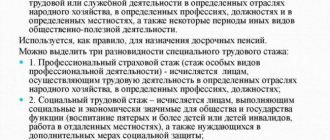There are a large number of regulated deadlines in procurement legislation
Deadlines in 44-FZ are established at all stages, during the preparation and placement of a procurement schedule, schedule plan, preparation and placement of auction or tender documentation, start and end dates for giving clarifications, deadlines for filing applications, reviewing applications, concluding a contract, posting information on the results of execution contract and many others.
At the same time, administrative liability and considerable fines are provided for violation of deadlines.
The procedure for determining SGOZ according to Federal Law No. 44
A formula is used to determine the total purchase volume. It includes these components:
- The cost of contracts that appeared last year. It is assumed that they will be paid in the current period.
- Concluded contracts executed and paid for in the current year.
- Contracts concluded this year that are subject to execution this year and next year. The calculations take into account only the part that will be paid in the current period.
When establishing the total volume of purchases, these costs are taken into account:
- Salary and travel allowances.
- Money that will be used to pay taxes and other payments to the state treasury.
- Payment of compensation for damage caused by the entrepreneur.
- Income from the activities of the subject.
- Funds that were issued as part of the procurement.
The total volume is formed from money intended to pay for purchased goods and services in the current period.
What is not taken into account when calculating the SGOD
The list of contracts that are not taken into account when determining the SGOZ is established by Part 1 of Article 30 of Federal Law No. 44. In particular, this applies to government procurement for small businesses and NPOs working in the social sphere:
- Defense orders and procurement that ensure state security.
- Providing loans.
- Orders concerning the use of atomic energy.
- Contracts with a single supplier (Part 1 of Article 83 of Federal Law No. 44).
- Closed auctions and competitions.
That is, all these provisions can be excluded when making calculations.
TERMS PROVIDED BY THE CIVIL CODE
The first thing to remember is the general rule that if the law does not directly indicate that the calculation of the period is carried out in working days, then calendar days are meant.
It follows, for example, that clarifications of the provisions of auction documentation within the framework of 44-FZ must be published within two calendar days from the receipt of a request for clarification.
And this is a direct reading of 44-FZ.
However, according to Article 2 44-FZ, the provisions of the Civil Code are the basis for the validity of the provisions of the Law on the Contract System. And Article 193 of the Civil Code says that if the end of the period falls on a non-working day in the organization, then the period is transferred to its first working day.
And then, if the request was received by the Customer on Friday, then by responding on Monday, the Customer acts lawfully.
What is the total annual purchase volume, and what is it for?
This concept refers to the main ones and is given in clause 16, part 1, article 3 of 44-FZ. Total Annual Procurement (AGP) is the total amount of money received by an organization to carry out procedures to meet the needs of those organizations.
SGOZ according to 44-FZ is needed to solve a number of problems and calculate important criteria for economic activity:
- control of the procurement activities of the auction organizer is transferred either to the contract manager or to the contract service. The choice of the required option is made based on the size of the State Defense Order: if it is less than 100 million rubles, a contract manager is sufficient, if more, the powers are transferred to the contract service (Article 38 44-FZ);
- the procurement documentation specifies the requirement to involve representatives of SMP and SONCO as subcontractors, the amount of transactions with them must be at least 15% of the SSP during the year (Article 30 44-FZ);
- When conducting a request for quotation, the volume of purchases that can be carried out in this form is established. Their amount should be no more than 10% of the SGOZ (Part 2 of Article 72 of 44-FZ). The same procedure is enshrined in Part 2 of Article 82.1 of 44-FZ for a similar procedure in electronic form;
- the law allows the customer to enter into a contract with single suppliers without conducting competitive procedures. The total cost of such contracts should not be more than 5% of the SGOZ (clause 4, part 1, article 93 of 44-FZ);
- some auction organizers, for example cultural institutions, educational and scientific organizations, are allowed to conclude contracts without competitive procedures (clause 5, part 1, article 93 of 44-FZ). Their total amount should not exceed 50% of the SGDO.
The total annual volume is used when drawing up a schedule for the financial year and a report on the involvement of SMP and SONPO in procurement.
What amounts does the SGOZ consist of?
- from last year’s contracts, but payment for them will be made this year;
- from contracts of the current year and payment for them in the same current year;
- from contracts concluded in the current year for several years, but only payment for them in the current year is taken into account.
Thus, the total annual volume will be obtained if you add up all these types of contracts for the past, current and future years.
Based on the size of the SGOZ, you can understand who has the right to carry out a specific procedure. If the total figure does not exceed 100 million rubles, and the customer does not have a contract service, then the customer appoints an authorized person (contract manager) responsible for concluding and fulfilling obligations under the contract. If the purchase volume is more than 100 million rubles, then the customer is obliged to form a contract service.
The following conditions are mandatory: contract service employees must have at least additional education in the field of procurement, and the position of contract manager can be held by either the customer’s manager or one of his deputies.
What amounts are not included in the State Defense Contract?
According to Article 30 of 44-FZ, the following are not included in the total annual volume of purchases:
- agreements to ensure the defense and security of the state;
- loan services;
- contracts with a single supplier, except for contracts that were carried out within the framework of clause 25-25.3 of Part 1 of Article 93 of 44-FZ based on the results of the failed determination of contractors that do not include SMP and SONKO;
- agreements in the field of nuclear energy;
- procedures with a closed nature for identifying suppliers.
Payments under contracts and agreements concluded under Federal Law No. 223-FZ and Federal Law No. 94-FZ, which was in force until 2014, are not included in the total amount under 44-FZ.
What is considered a day off?
Standard Saturdays and Sundays cannot always be considered a day off in legal terms.
Work and rest standards are established by the Labor Code of the Russian Federation. Article 11.
The general day off is Sunday. The second day off in a five-day work week is established by a collective agreement or internal labor regulations.
Both days off are usually provided in a row.
For employers whose work suspension on weekends is impossible due to production, technical and organizational conditions, days off are provided on different days of the week in turn to each group of employees in accordance with the internal labor regulations.
The second day off may be absent in principle, and this should be understood primarily by procurement participants when sending any documents within the regulated period.
In addition, the Customer, in certain cases, can also act on the basis of the general requirements of the law, taking into account its own internal orders and staffing schedule, if they are properly drawn up.
"Banking" and "operational"
However, as mentioned above, calendar and working days are not all the “varieties” of days that a lawyer or accountant has the opportunity to encounter. For example, in my practice there was a contract for the supply of goods, the deadline for which was expressed in banking days. On the one hand, this looks strange, because the term “banking day,” logically, can only be associated with settlements and transfers of funds. On the other hand, some believe that a “banking day” can be equated to a working day. In any case, you should look into this issue in more detail.
In this case, we should start with the fact that the term “banking day” itself does not exist in the legislation! There is a term “operational day”, which each credit institution defines independently. It denotes the time during which banking operations and other transactions are carried out, as well as the period of document flow and processing of accounting information, ensuring the registration and recording of transactions performed during operational time, the calendar date of the corresponding day (clause 1.3. Regulations on the rules of maintaining accounting in credit institutions located on the territory of the Russian Federation, approved by the Central Bank of the Russian Federation dated July 16, 2012 No. 385-P). In other words, a transaction day is a part, a period of a working banking day, as below in the same paragraph 1.3. It is indicated that some operations can be carried out even after the end of the operating time.
However, let us return to the issue of the need to agree on the concept of “banking day”. In my opinion, the simple technique that Mr. Polskikh described above is also quite applicable here: since there is a possibility of different interpretations of the same term, it is best to agree on a single version and fix it in the “body” of the agreement. True, in the case of banking days this will be a little more complicated than with calendar days. After all, partners, in fact, will be interested in operating days, i.e. the time period during which a payment can be made and the partner will receive the transferred money. And to do this, each of them must clarify exactly what time is considered operating days for “his” bank. If they match, great. Well, if not, then you can try to “balance” the situation by refusing to use the “banking” or “operating” day when calculating the deadlines for fulfilling the obligation, and using working or calendar days, which, as mentioned above, can be easily specified in the contract .
Anna Mishina
, for the magazine "Calculation"
The best solution for an accountant
Berator is an electronic publication that will find the best solution for any accounting problem. For each specific topic there is everything you need: a detailed algorithm of actions and postings, examples from the practice of real companies and samples of filling out documents. Go to Berator Online – e.berator.ru
If you have a question, ask it here >>
Examples of calculations
Let's look at a simple example. In 2021, limits on budget contracts in the amount of 10,000,000 rubles have been allocated for the subject. The volume of total purchases for 2021 will be 10,000,000 rubles. But then from this amount you need to subtract the amounts required to pay for contracts received in 2021 and completed in 2021. This is the starting point.
An example of calculating the minimum amount of purchases from small businesses and non-profit organizations
SGDO is 10,000,000 rubles. From this value you need to subtract the cost of purchases based on clause 1 of part 1 of Article 30 of Federal Law No. 44. For example, the cost of such purchases is 3,000,000 rubles. To determine the purchase limit for small businesses, you need to determine 15% of the State Budgetary Defence. 15% is the minimum value.
The calculations will be as follows:
(10 000 000 – 3 000 000) * 15%.
Result: 1,050,000 rubles.
Determining the maximum volume of purchases using the request for quotation method
The maximum volume in this case is 10% of the size of the SGOZ. That is, these calculations are carried out:
10,000,000 * 10% = 1,000,000 rubles.
IMPORTANT! The annual value of contracts created through a request for quotation cannot exceed 100,000,000 rubles.
Instructions for calculating SGOZ
Correct calculation involves setting purchasing limits for small businesses and non-profits. First, a person needs to determine the total volume of purchases. Then you need to subtract from the resulting result the values that are not taken into account when calculating the SGOD. Let's look at the calculation instructions:
- The total volume of purchases for a specific organization for the year is determined.
- The amount allocated to pay for loans, closed procurements, defense products and products in the field of nuclear energy is subtracted from the result.
- 15% is deducted from the result. The resulting value must be rounded up. This is necessary due to the high risk of a decrease in value during the auction period.
This formula is used for calculations:
SGOZ = P + T + S
It uses the following values:
- P – contracts issued in the past year and requiring payment in the current year.
- T – contracts received in the current year, as well as completed, requiring payment.
- C – contracts received in the current year and valid for the next few years.
This is the general form for calculating SGOS. It is by adding these indicators that the total volume of purchases is formed. However, the calculation procedure will vary depending on for which company the parameter needs to be determined.









